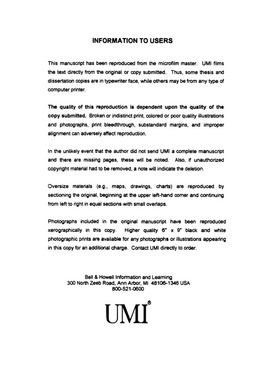| dc.contributor.advisor | Castagna, John, | en_US |
| dc.contributor.author | Chen, He. | en_US |
| dc.date.accessioned | 2013-08-16T12:31:09Z | |
| dc.date.available | 2013-08-16T12:31:09Z | |
| dc.date.issued | 2000 | en_US |
| dc.identifier.uri | https://hdl.handle.net/11244/6034 | |
| dc.description.abstract | The derivation and computation of the reflection coefficient for general anisotropic media is described along with software written to implement the computation. This program is then used to compare the reflection response over a fractured reservoir model with a single set of fractures with the response over a reservoir with two fracture sets. The results clearly indicate that shear waves show the greatest potential for exploration of fractured reservoirs using AVO methods. | en_US |
| dc.description.abstract | The AVO studies were accomplished by developing two reflection coefficient programs. The first program computes the reflection across a boundary between two transversely isotropic media with vertical axes of symmetry (VTI). Although the equations for this program have been published, this thesis corrects important typographical errors in the published paper. The second program computes the reflection across the boundary of two arbitrary anisotropic media. The computer implementation published here was developed specifically for this thesis work. | en_US |
| dc.description.abstract | A case history AVO study is applied to data collected in the Gulf of Mexico to identify the important parameters for a bright reflector using published empirical relationships between parameters. Inversions for Vp/V s are found to be dependent on assured anisotropic parameters. | en_US |
| dc.description.abstract | Finally, ray tracing through simple anisotropic models is used to evaluate the effects of anisotropy upon seismic processing. The results indicate that by ignoring anisotropy, a number of processing artifacts can be produced that will mislead the interpreter. | en_US |
| dc.description.abstract | The VTI reflection coefficient program is used to evaluate several approximate reflection coefficient formulas. A method of using three parameter cross-plotting is developed that can be used to consider the role of anisotropy in AVO studies and improve the accuracy of the interpretation. | en_US |
| dc.description.abstract | This thesis investigates some of the effects of anisotropy upon seismic exploration for oil and gas. In particular, the effects of anisotropy upon amplitude versus offset (AVO) and seismic interpretation are examined. | en_US |
| dc.format.extent | xvii, 214 leaves : | en_US |
| dc.subject | Seismic prospecting. | en_US |
| dc.subject | Amplitude variation with offset analysis. | en_US |
| dc.subject | Engineering, Petroleum. | en_US |
| dc.subject | Petroleum Prospecting. | en_US |
| dc.subject | Anisotropy. | en_US |
| dc.subject | Geophysics. | en_US |
| dc.title | Anisotropic effects upon amplitude-vs-offset response in realistic earth models. | en_US |
| dc.type | Thesis | en_US |
| dc.thesis.degree | Ph.D. | en_US |
| dc.thesis.degreeDiscipline | Conoco Phillips School of Geology and Geophysics | en_US |
| dc.note | Source: Dissertation Abstracts International, Volume: 61-09, Section: B, page: 4624. | en_US |
| dc.note | Major Professor: John Castagna. | en_US |
| ou.identifier | (UMI)AAI9988310 | en_US |
| ou.group | Mewbourne College of Earth and Energy::Conoco Phillips School of Geology and Geophysics | |
